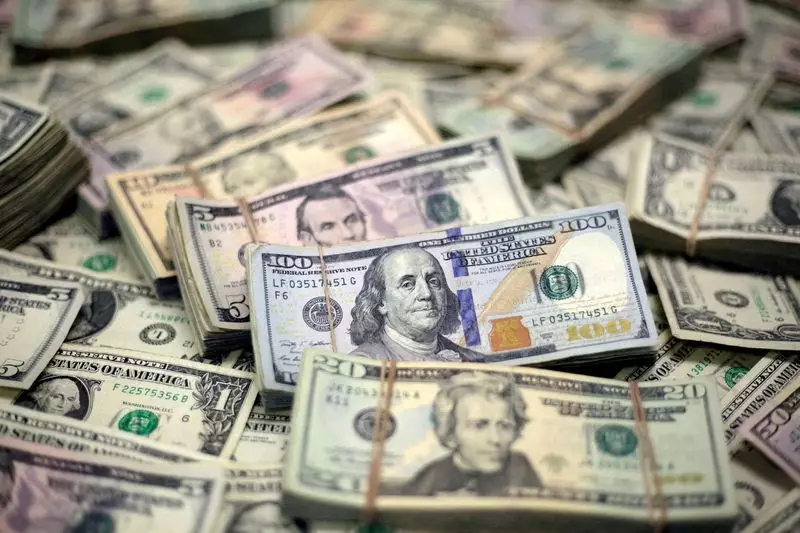In a surprising turn of events, the U.S. dollar has surged to its highest point in over two months, largely driven by the market’s belief that the Federal Reserve will adopt a cautious approach to interest rate cuts in the near future. As economic indicators continue to depict a resilient U.S. economy, investors appear more optimistic about the dollar’s trajectory. This increase has placed the dollar index at 103.18, nearing its recent high of 103.36, and signaling a 2.5% increase that could potentially end a three-month downward trend.
The Federal Reserve’s directive has become central to currency traders, especially after comments from Fed Governor Christopher Waller suggested a reserved stance on rate cuts. Waller emphasized the need for careful navigation of the economic landscape and hinted at a gradual reduction in policy rates over the coming year. Such pronouncements have likely emboldened traders, leading them to scale back expectations for steep cuts, particularly in light of rising inflation figures in September that exceeded many analysts’ predictions.
As the dollar strengthens, other currencies are inevitably affected — none more so than the Japanese yen. With Japan’s monetary policy becoming increasingly dovish under Governor Kazuo Ueda, doubts about imminent rate hikes have emerged. The dollar’s strength has pushed the yen closer to the psychologically important threshold of 150 per dollar, a level not breached since early August. The Federal Reserve’s more aggressive approach contrasts sharply with Japan’s prevailing stance, leading to significant currency fluctuations.
In the latest trading session, the yen traded at 149.55 per dollar, having touched a high of 149.98 the previous day, showcasing the volatility that plagues the currency amid the backdrop of Japan’s uncertain economic policies. The Bank of Japan’s leadership and the perceived hesitance to tighten measures have cast a shadow over the yen’s fortunes and created a widening divide between Japanese and U.S. monetary policies.
Meanwhile, the euro is also feeling the pressure as it hovers near its lowest levels since early August ahead of the forthcoming European Central Bank (ECB) meeting. Analysts are predicting further interest rate cuts from the ECB, which may have profound implications for the euro’s value. This anticipation, combined with the evident strength of the dollar, has led to a precariously poised euro trading around $1.090825. The ripple effects of monetary policy decisions are palpable, as Europe grapples with its own economic challenges, including inflation and sluggish growth.
The economic landscape in the U.S. showcases resilience, with job data expected to reveal complexities courtesy of recent disruptions such as hurricanes and labor strikes affecting entities like Boeing. These unforeseen events are projected to complicate the analysis of upcoming non-farm payroll data, which could unpredictably sway market sentiment leading up to the next Federal Open Market Committee (FOMC) meeting.
Interestingly, despite the dollar’s climb, the Australian dollar has maintained relative stability in the trading arena, positioning itself at $0.67275. Conversely, the New Zealand dollar experienced a slight dip, reflective of broader regional economic sentiments. The fluctuations in these currencies underscore a complex interplay between local economic indicators and overarching global trends, as Asia-Pacific nations navigate the ripple effects of U.S. monetary policy.
The Chinese yuan has also remained stable around 7.0935 per dollar, as investors monitor potential fiscal stimulus measures hinted by Chinese authorities. Analysts are gearing up for developments from the upcoming National People’s Congress, where significant economic strategies may be unveiled to counteract slowing growth.
The dollar’s recent ascendance illustrates a complex web of economic factors that impact global currency valuations. As traders adjust their outlook based on the Federal Reserve’s cautious strategy, they must also remain vigilant to international events that could lead to sudden shifts in market dynamics. With the euro, yen, and regional currencies reacting to these developments, the global economic landscape is anything but predictable, demanding a keen eye from participants striving to make informed decisions in this volatile environment.

